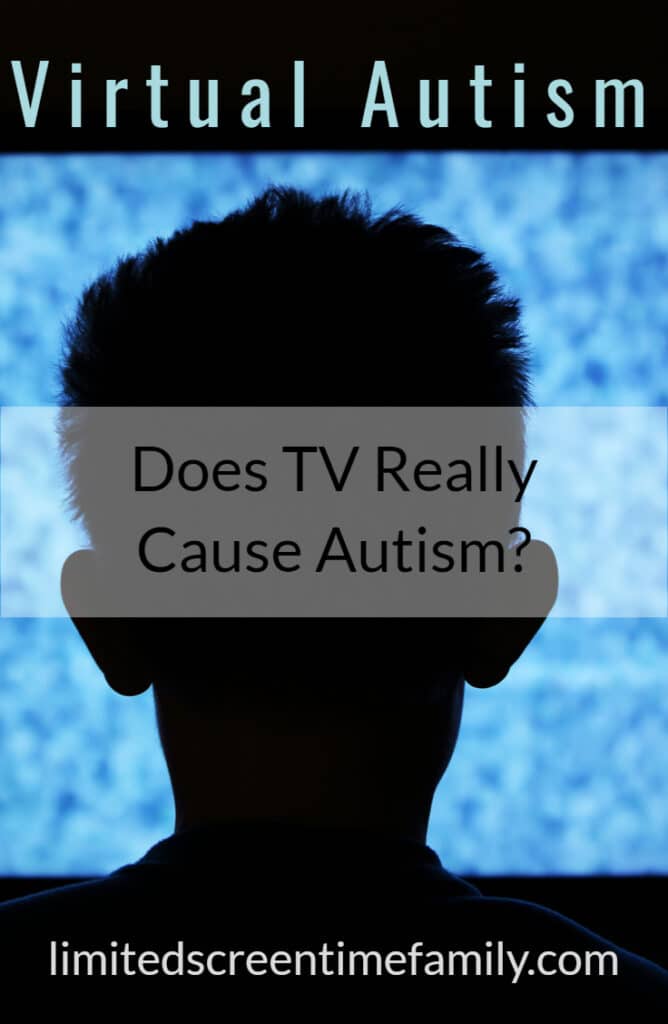If you have spent enough time in a screen time niche group, it’s likely you have heard the term “virtual autism“. What is it, though?
Is it an actual diagnosis and does screen time really cause autism?
Let’s get some answers. Here is everything you need to know about virtual autism.

What is virtual autism?
The term virtual autism is described as “autism induced by electronic screens”. The term was coined by clinical psychologist Dr. Marius Zamfir.
Dr. Zamfir was curious about the astonishing prevalence of autism presenting in a children’s hospital in Romania. He went through the logs and discovered that the children who were presenting with autism were being exposed to excessive daily screen time.
Does screen time really cause autism?
Research does show a link between ASD (Autism Spectrum Disorder) and exposure to excessive screen time. Children who are predisposed to ASD have shown localized changes to their brains due to repetitive non-social sights and sounds from screen time.
Research also shows that children whose days are filled with excessive screen time sometimes experience a lack of sufficient real life social interaction. This can cause children to mimic the robotic output of electronic devices instead of learning normal human-to-human social cues.
Since autism is characterized by social behaviors, this has the potential of presenting as ASD.
The glaring issue with studies linking ASD to screen time is the correlation vs causation piece.
Are parents and caregivers of yet to be diagnosed children with ASD more likely to resort to screen time due to their misunderstanding a child’s behavior? Are parents mistaking behaviors related to sensory processing issues for run of the mill toddler behaviors?
Are children with sensory processing issues drawn to screen time to a greater degree?
Are these diagnoses being given accurately?
These studies leave us with more questions than they do answers.
Another glaring problem with these studies and their synopses is that they imply (or in some cases state outright) that autism is something that needs to fixed and that removing screen time from a child’s life leads to “recovery” from autism.
The studies and synopses are problematic, as well as the language. Also, there is no known “cure” for autism and scientists are unsure of the exact cause of autism.
Until screen time has been pinpointed as a cause, I caution people about throwing the term “virtual autism” around. Virtual autism is currently not a medical diagnosis, nor is it a widely accepted hypothesis.
Can all children benefit from reduced screen time? Absolutely.
The importance of human interaction for children cannot be overstated. Cutting back on screen time often comes with the benefit of increased social interaction – very important.
Should we be scrambling in a frantic quest to cure something that is not an sickness or wagging fingers at parents of autistic children? No.
There are many great reasons to limit our children’s screen consumption and autistic children can absolutely benefit from screen time limits.
So can neurotypical children.
